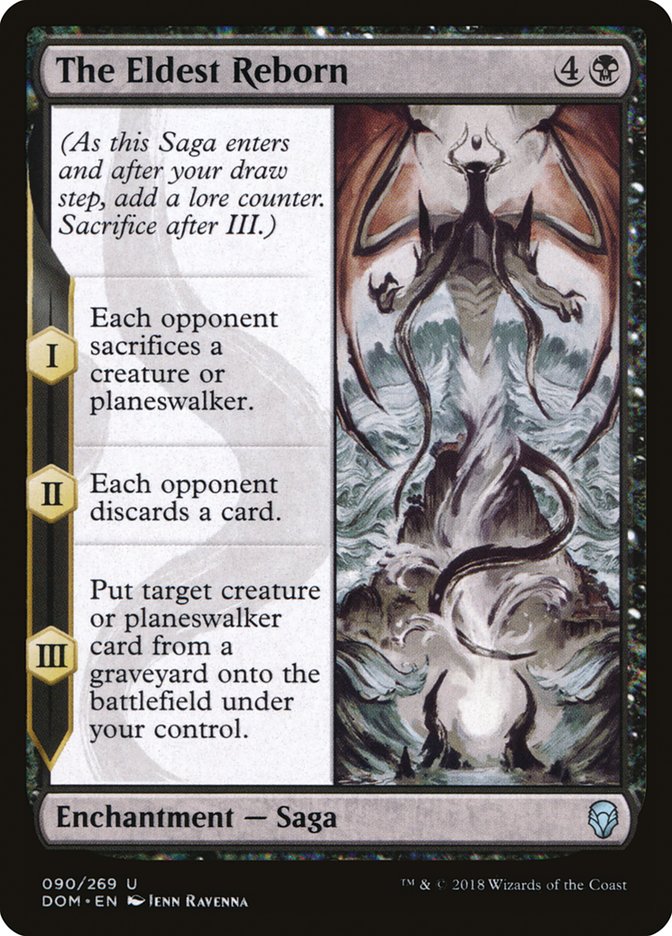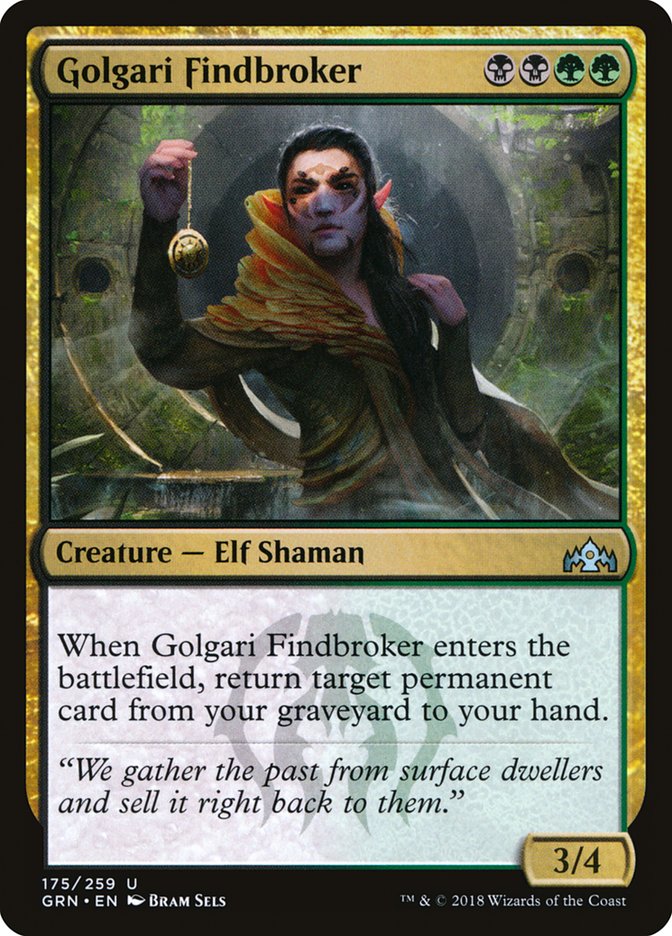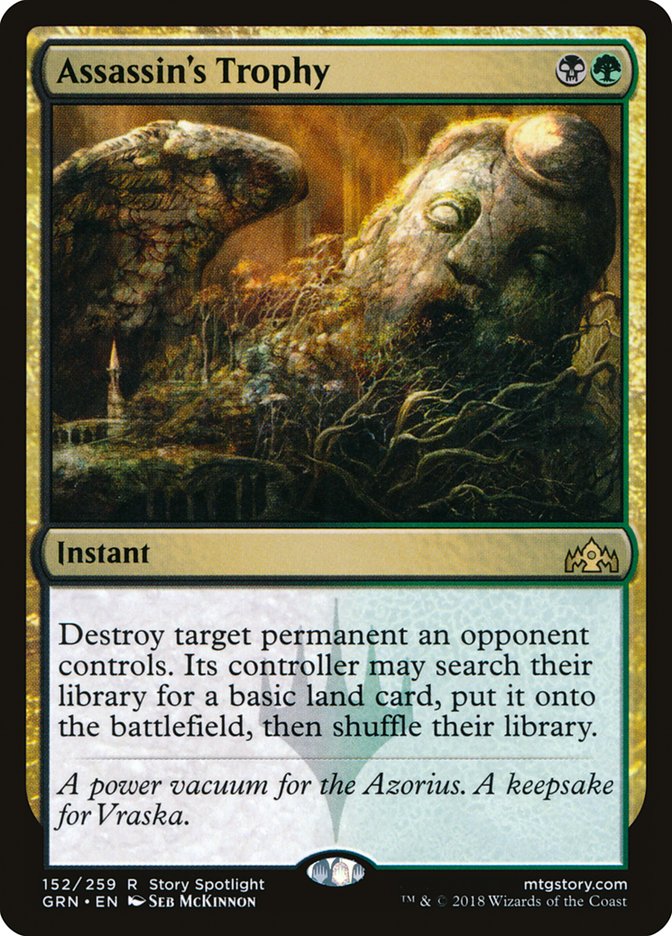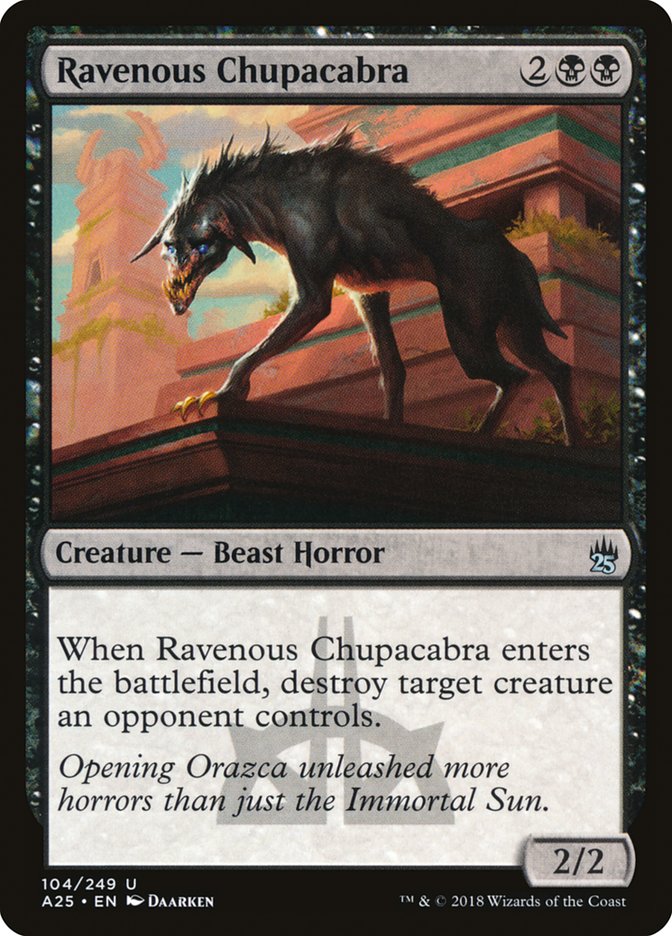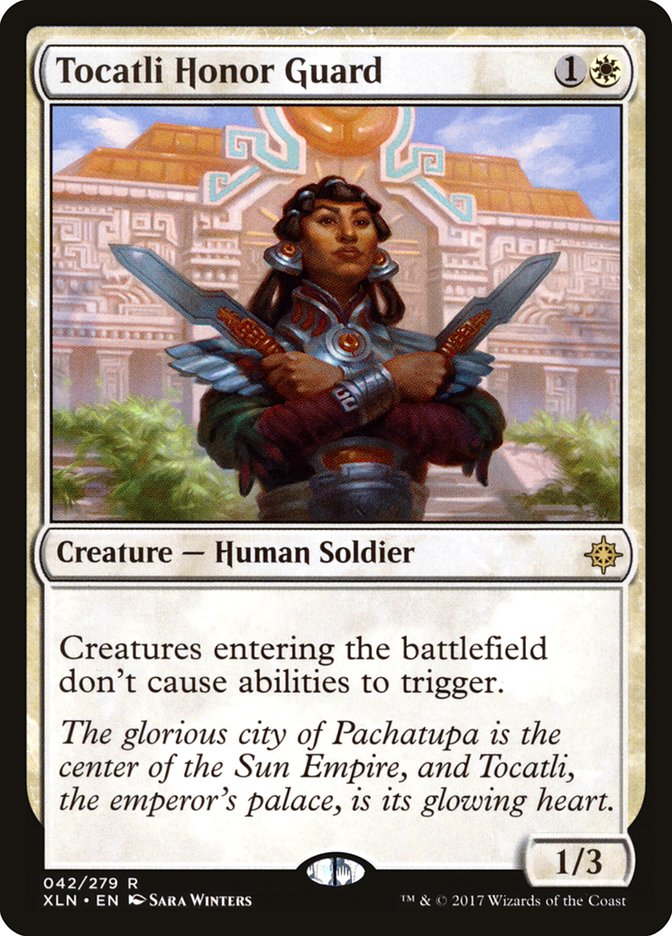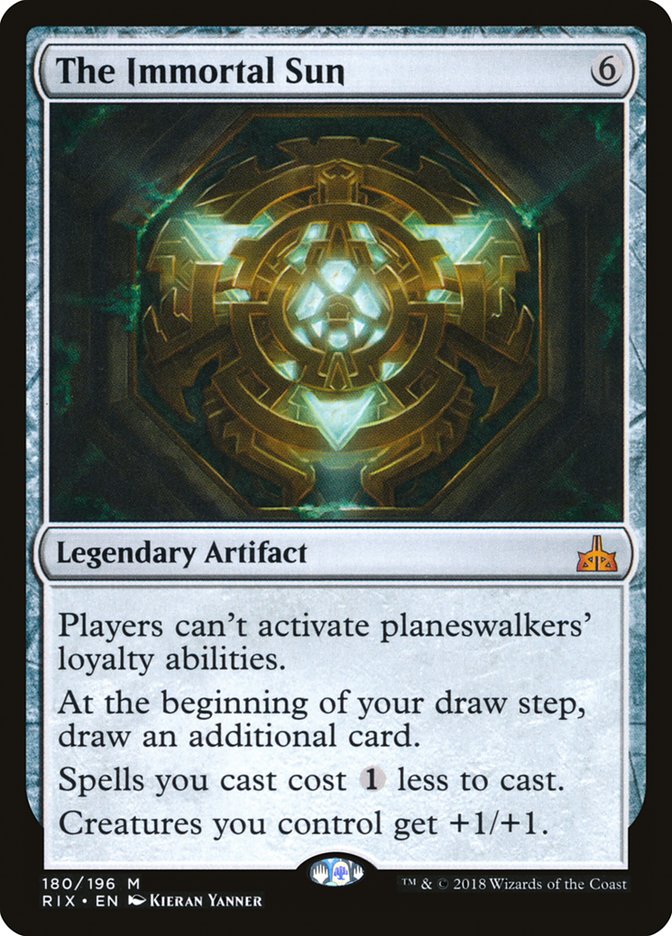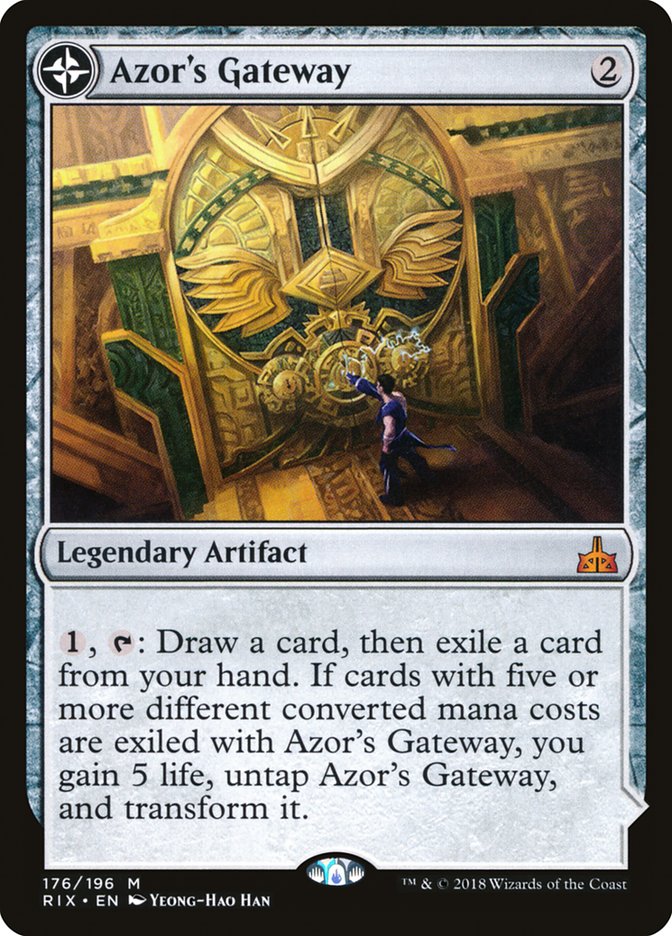Standard on the eve of the Pro Tour is in an exciting, dynamic place. The format has been evolving at a blistering pace, and the evolution of the best decks over the past month has been delightful to watch. At GP Lille and GP New Jersey this past weekend, we saw a single slice in time of the metagame, one that is as instructive now as it will be meaningless in a few short weeks.
What do I mean by that?
Two weeks in the world of Magic Online is a long, long time. The decks that succeeded this week may not succeed next week. The decks that succeed next week may not be the best options at the Pro Tour. The interplay of threats and answers, different gameplans, engines and disruption, all move in sync with one another as different decks break out and swiftly cause a rebalancing in the metagame.
We’ve seen this in past formats, but Standard right now is particularly open and ripe for innovation. Far from being a Golgari-dominated wasteland of endless midrange mirror matches, the metagame seems to have opened up to multiple color combinations with different exciting and interesting strategies.
So, for the next two weeks, what should we be paying attention to? What matters in this Standard format and what pressures exist that we need to keep in mind? There are several powerful options out there that all have their own exciting draws, but most will be suboptimal choices come Pro Tour time. Which of these is going to be the best choice at the PT?
Creatures (25)
- 4 Llanowar Elves
- 1 Carnage Tyrant
- 1 Wildgrowth Walker
- 4 Merfolk Branchwalker
- 3 Seekers' Squire
- 4 Jadelight Ranger
- 4 Ravenous Chupacabra
- 2 Midnight Reaper
- 2 Golgari Findbroker
Planeswalkers (6)
Lands (23)
Spells (6)

Jonathan Sukenik has been a skilled competitor for the better part of the last decade. I’ve known him since we were both teenagers, and he’s never failed to impress me with his positivity or his analytical deckbuilding prowess. For this GP, he took to an unorthodox strategy to attack his time crunch: he simply aggregated the best-performing Golgari lists, averaged their numbers, massaged the maindeck/sideboard configurations a little bit to give himself more of a coherent gameplan, and took this beauty all the way to the Top 16 at GP New Jersey!
Though I wouldn’t recommend copying his list card-for-card, it’s extremely instructive for us to look at all the powerful haymakers available in the Golgari colors, since Jonathan aggregated them all in a single deck. As is the case in a great number of formats, Golgari-based decks (in this case, straight Golgari) has such an abundance of powerful threats and great mix of answers that a player would reasonably be able to field an 100-card deck without sacrificing much, if any, card quality.
There are decks focused on looping The Eldest Reborn with Golgari Findbroker, decks focused on accelerating out a Carnage Tyrant as consistently as possible, decks focused on Gruesome Menagerie, decks focused on planeswalkers, and decks focused on The Immortal Sun to nullify enemy planeswalkers.
And those are just the threats!
For removal choices, there are decks with Cast Down, decks with Assassin’s Trophy, decks with Dead Weight, decks with Necrotic Wound, decks with Plaguecrafter, decks with Reaver Ambush, and decks with only Ravenous Chupacabra and Vraska’s Contempt.
The lists are as customizable as you want, and the biggest challenge once you commit to the Golgari base is figuring out which threats and answers best cover the most decks and offer you the best chance to minimize the effectiveness of your opponents’ answers. It’s a Jund Guy’s dream, which is odd, because StarCityGames.com’s own Jund Guy, Brad Nelson, actually played a different deck this weekend. He wanted to prey on Golgari decks, and it seems like he got his wish to the tune of a finals appearance with…
Creatures (22)
- 4 Tocatli Honor Guard
- 4 Adanto Vanguard
- 4 Rekindling Phoenix
- 3 Lyra Dawnbringer
- 4 Resplendent Angel
- 3 Aurelia, Exemplar of Justice
Lands (25)
Spells (13)

This deck is chock-full of some of the flashiest Angels in the format, and an ostensible weakness to Ravenous Chupacabra (barring, of course, Tocatli Honor Guard) didn’t stop Brad from smashing his way to the finals with a bunch of hefty threats that all win the game on their own if left unchecked.
Tocatli Honor Guard, in particular, is an interesting and powerful inclusion. The little Torpor Orb that could just wrecks Golgari Midrange, shutting down explore creatures, Ravenous Chupacabra, and Golgari Findbroker with ease while demanding a removal spell on its own. In a deck with so many must-answer threats, the presence of a two-mana lightning rod like the Honor Guard is very welcome.
Brad wisely combined this incredibly irritating threat with The Immortal Sun in the sideboard, offering a number of different powerful permanents that shut down large swaths of the Golgari deck. In fact, this setup is awfully reminiscent of previous Brad Nelson operations, such as his exploits with Big Boros and Abzan Aggro in Standard back when Khans of Tarkir and Theros were legal. Those were aggressively slanted midrange decks that maximized sideboard shuffles to present different gameplans in different matchups, which often left opponents stumbling to figure out what was up. This Boros Angels deck follows a similar script.
For example, when Tocatli Honor Guard comes out against control decks, Dire Fleet Daredevil comes in to offer some additional value and a bit of disruption against cards like Chemister’s Insight. Then there are sweepers and cheap removal like Deafening Clarion and Seal Away for Mono-Red Aggro and Izzet Drakes, respectively; Fight with Fire and Ixalan’s Binding for other midrange matchups; and The Immortal Sun to offer a unique effect and finisher. It’s a work of art, and it remains to be seen if Brad, Owen Turtenwald (who also played the deck to a 12-3 finish), and their crews have another trick up their sleeves for the Pro Tour.
As it currently stands, though, there was another group that stepped ever-so-slightly ahead of Brad and his squad’s innovation. Edgar Magalhaes finished ninth and Eli Kassis won the whole tournament with Jeskai Control, bringing a smile to teammate (and control lover) Shaheen Soorani’s tired old face once again. Teferi, Hero of Dominaria still reigns supreme, it seems.
Planeswalkers (4)
Lands (27)
Spells (29)

Our very own Todd Anderson was spotted singing the praises of Azor’s Gateway and Expansion // Explosion, and it seems like he had the right idea. The niche rare turns out to be exactly what a control deck like this needs to sculpt a draw in the early and middle turns and bust out a massive mana advantage in the later turns to force through haymakers like Teferi, Explosion, or even a Banefire.
Control decks like this one thrive when the format slows down. If Mono-Green Aggro is the deck of choice, or folks are all jamming Mono-Blue Aggro, Jeskai Control looks a little clunky and vulnerable. As the average converted mana cost of the format slowly ticks up, though, it gets better and better. Once the midrange arms race is on, Teferi can just come in and shut the door on further buildup. This deck (and, to a lesser extent, something like Bant Nexus) is the end of the midrange arms race. There’s no going over the top of this kind of end-game.
When folks are relying on unwieldy, expensive cards like Carnage Tyrant to get the job done against control, a few copies of Settle the Wreckage, Star of Extinction, or Cleansing Nova are the appropriate answers to keep everything orderly, and the rest is just mopping up the dregs of an offense. Eli dismantled Brad in the finals of the Grand Prix because Brad’s deck, though incredible at attacking other inbred midrange decks, was just a little too top-heavy and inbred itself to put up a swift offense to beat the control deck. I’m not quite ready to call Explosion the new Sphinx’s Revelation, but Azor’s Gateway and Teferi, Hero of Dominaria make a compelling case for it being a powerful pole of the format in its own right.
Speaking of poles of the format, Arclight Phoenix and Crackling Drake have carved out their own little section of Standard for aggro-combo aficionados. The Izzet Phoenix deck spends a couple of turns setting up before exploding on the battlefield with either multiple Arclight Phoenixes or a massive flying Drake backed up by a Dive Down or a Maximize Velocity to punch through for big chunks of damage.
The deck, like Jeskai Control, exploits a hole in the Golgari mages’ arms race, taking ponderous, grindy cards like Jadelight Ranger and Find // Finality and making them largely ineffective. Taking these gameplans, which are either over the top of what Golgari can do or completely orthogonal in the sense that they attack on an uncontested axis, it seems like the erstwhile king of Standard is facing down a slew of moderate-to-bad matchups and needs to make some drastic changes.
Here’s Eduardo Sajgalik’s list from the Top 8, which doesn’t play exactly the mix of cards I’d want in my list (specifically maindeck Dive Down) but does a pretty good job of displaying what the deck is all about:
Creatures (12)
Lands (21)
Spells (27)

A weird overlap of one-mana cantrips (Opt, Warlord’s Fury, and Crash Through) has given Standard just enough density of cheap instants and sorceries to make this deck possible. I expect cards like Deathgorge Scavenger and Necrotic Wound to increase in value for Golgari, and I imagine a large part of the success of Jeskai Control was predicated on the use of Seal Away and Settle the Wreckage as perfect answers to Arclight Phoenix.
This deck has some incredibly broken draws, though, and it would not surprise me in the slightest if it comes roaring back to Standard (possibly even with a white splash) to dominate the Pro Tour. It’s customizable enough, and the cantrips offer it such a high chance of drawing impactful sideboard cards, that it’s hard for me to imagine it not being a perennial contender in Standard for months to come.
Then, of course, we have our two monochromatic decks from the finals of Grand Prix Lille, Mono-Red and Mono-Blue. Goblin Chainwhirler versus Tempest Djinn. These two decks offer unique angles for attacking the metagame in their own right, though they are both slightly lower in raw power than some of the multicolor decks seen above. When their draws line up well, though, they absolutely demolish most of the rest of Standard.
Creatures (22)
- 2 Rekindling Phoenix
- 4 Fanatical Firebrand
- 4 Ghitu Lavarunner
- 4 Goblin Chainwhirler
- 4 Viashino Pyromancer
- 4 Runaway Steam-Kin
Lands (22)
- 22 Mountain
Spells (16)
Sideboard

Basic lands. So many basic lands. It’s refreshing to see that, after all these years, there’s still something to be said for the cleanest manabase in the game.
Nassif, of course, showing his penchant for unique, narrow one-ofs (he did win a Legacy GP with a sideboard of fifteen different cards once!), has some interesting choices, but the core concept of the deck is fairly simple. Assemble an evasive creature with Curious Obsession or win with a massive Tempest Djinn. Sometimes you can nickel-and-dime your way to a win without either of the centerpieces of the deck, but the deck truly works when it draws some number of these payoff cards. Get them down early, use tricks and countermagic to hold off any interaction, and run over the opposition. The deck is just a classic Fish deck, and throwbacks to 1998 are right in Nassif’s wheelhouse.
His finals opponent, on the other hand, won by cutting the Risk Factors from Mono-Red and playing a transformative Big Red sideboard plan that hasn’t been seen in some time. To be fair, a lot of the most powerful red cards precluded a “going bigger” strategy to some degree, as Bomat Courier and Hazoret the Fervent provided great incentives to stay small. Etienne Busson recognized the forgotten plan of Treasure Map combined with Fight with Fire and used it alongside Banefire to great effect at this GP. I expect this to be the standard version of Mono-Red going forward for the foreseeable future. Hats off to him!
Of course, there are a few other players in Standard as it currently sits. The most prominent among them is the Selesnya Tokens/Midrange macro-archetype, which has a number of different builds ranging from aggressive with Legion’s Landing to midrange with Vine Mare plus On Serra’s Wings to controlling with Path of Discovery, Wildgrowth Walker, and the Explore creature package. I’ll defer to Ben Yu and Matt Severa, who played the latter version to 12-3 finishes. This is my favorite build of Tokens, as it can compete with Golgari every step of the way (and runs my current favorite removal spell in Standard, Conclave Tribunal).
Creatures (20)
Lands (22)
Spells (18)

Path of Discovery plus Wildgrowth Walker is just filthy and I love how much lifegain there is in this deck to catch up from being behind. I love how well it can compete with other midrange decks by virtue of the diversity of its threats and the onus it places on decks like Golgari for both sweepers and targeted removal (i.e. Assassin’s Trophy) to beat March of the Multitudes and The Immortal Sun.
This is truly an impressive concoction for a midrange-centric Standard. The deck occupies a similar slice of the metagame to Brad’s Boros Angels deck, with a few different vulnerabilities and strengths. Ultimately, though, it attempts to compete as a midrange deck with specific advantages over generic Golgari, and if Boros Angels becomes the more targeted midrange deck for the next few weeks, this deck will jump up to the top of my list of playable options for the Pro Tour. Should the format turn more towards alternative axes (Drakes and Teferis), this deck becomes less desirable, or at least requires some sort of change to make it compete better. Regardless, this is one I’ll be testing over the week. Impressive!
I count at least a half-dozen major innovations that burst through to the surface of Standard in just the last week, with a handful of other less-noticeable minor tweaks and adjustments that merit significant discussion themselves! Card evaluations are all over the place, and the format is far from settled down. It’s exciting to watch the format move in real time, and the next two weeks look promising from the perspective of a player and a pundit. From Azor’s Gateway to Path of Discovery, we’ve got something special on our hands here.


